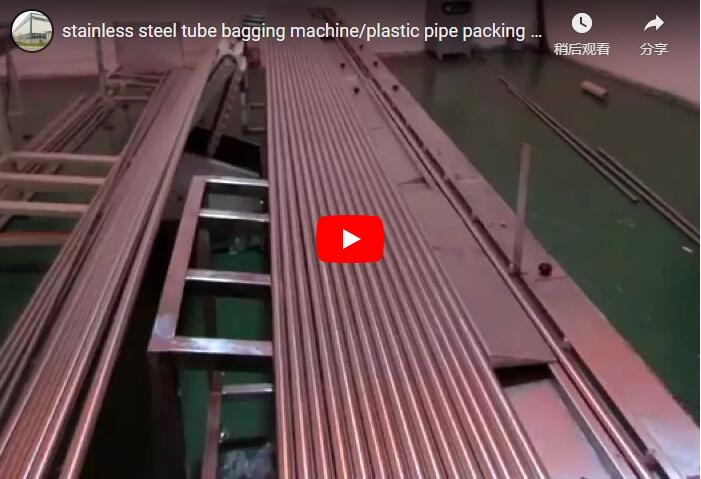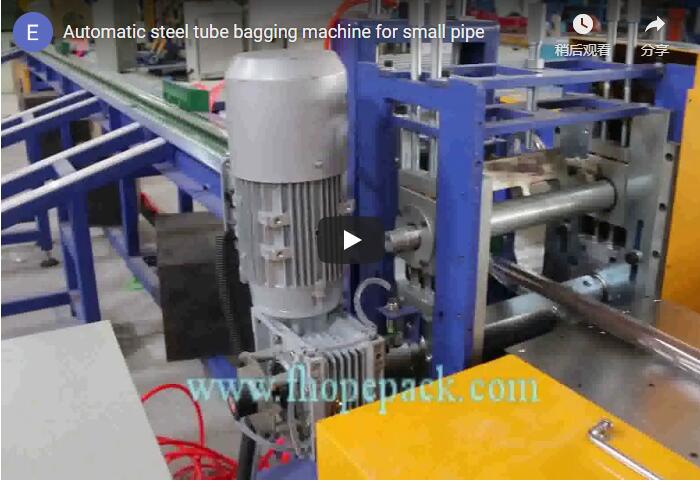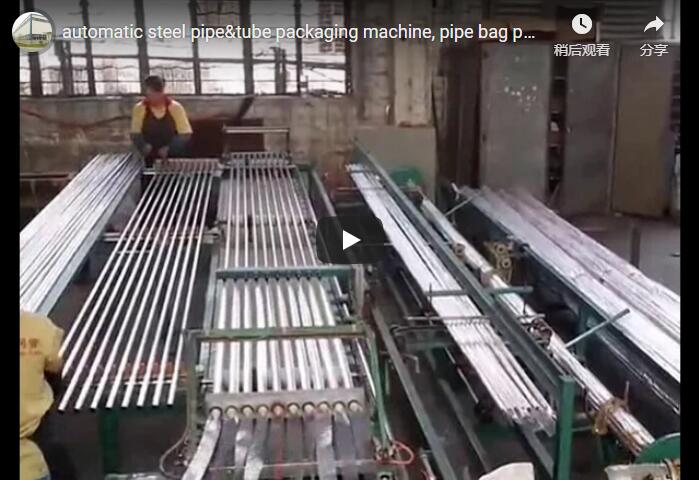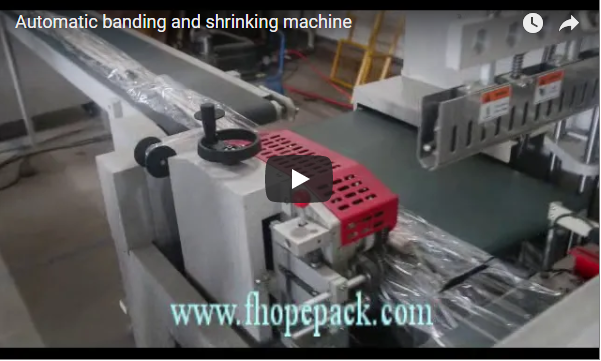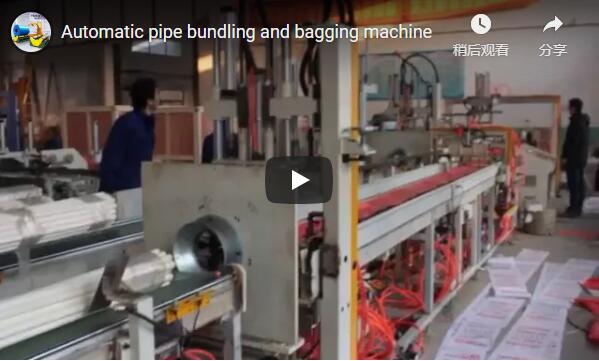Automated PVC Pipe Bundling and Bagging Lines: Technical Overview and Operational Insights
Handling and packaging large quantities of PVC pipes efficiently and securely presents a significant challenge in manufacturing and distribution. Manual methods are often labor-intensive, slow, and can lead to inconsistent bundle quality. Automated PVC Pipe Bundling and Bagging Lines offer a streamlined solution, integrating counting, bundling, strapping, and bagging into a single, efficient process.
These specialized systems are engineered to manage the unique characteristics of PVC pipes, delivering consistent results for businesses handling high volumes.
1. Operational Workflow: From Loose Pipes to Packaged Bundles
Understanding the sequence of operations provides insight into the system's efficiency:
- Pipe Infeed & Accumulation: Pipes are typically fed onto an accumulation table or conveyor system from an upstream process (like extrusion or socketing).
- Counting & Alignment: Sensors or mechanical counters accurately count the required number of pipes for a bundle. Alignment mechanisms ensure the pipes form a neat stack (often hexagonal or square).
- Bundle Formation: The aligned pipes are grouped together, ready for securing.
- Automatic Strapping: One or more automatic strapping heads apply and secure straps (commonly PET or PP) around the bundle at predetermined positions. This ensures bundle integrity during handling and transport.
- Bundle Transfer to Bagging Station: The strapped bundle is automatically transferred to the bagging section.
- Bag Application: A large PE film bag is automatically dispensed, opened, and applied over the pipe bundle.
- Bag Sealing: The open end of the bag is typically heat-sealed to create a secure, weather-resistant package.
- Discharge: The finished, bagged bundle is discharged onto an outfeed conveyor, roller table, or collection area, ready for storage or shipment.
2. Key System Components
A typical PVC pipe bundling and bagging line comprises several integrated modules:
- Infeed Conveyor/Accumulation Table: Manages the flow of pipes into the system.
- Counting and Alignment Unit: Ensures accurate pipe counts and neat bundle formation.
- Automatic Strapping Head(s): Applies tension, seals, and cuts strapping material. The number and position depend on pipe length and bundle size.
- Bundle Transfer System: Moves the strapped bundle between stations (e.g., lifting arms, pusher mechanisms, conveyors).
- Bag Dispensing & Opening Unit: Feeds film from a roll, cuts it to length (if needed), and opens the bag for insertion.
- Bag Applicator: Guides the bundle into the opened bag or pulls the bag over the bundle.
- Sealing Unit: Typically uses heat bars or impulse sealers for closing the PE bag.
- Outfeed System: Transports the finished bundle away from the line.
- Central Control System (PLC): Manages the entire sequence, timing, and synchronization of all modules, usually operated via an HMI (Human-Machine Interface) touchscreen.
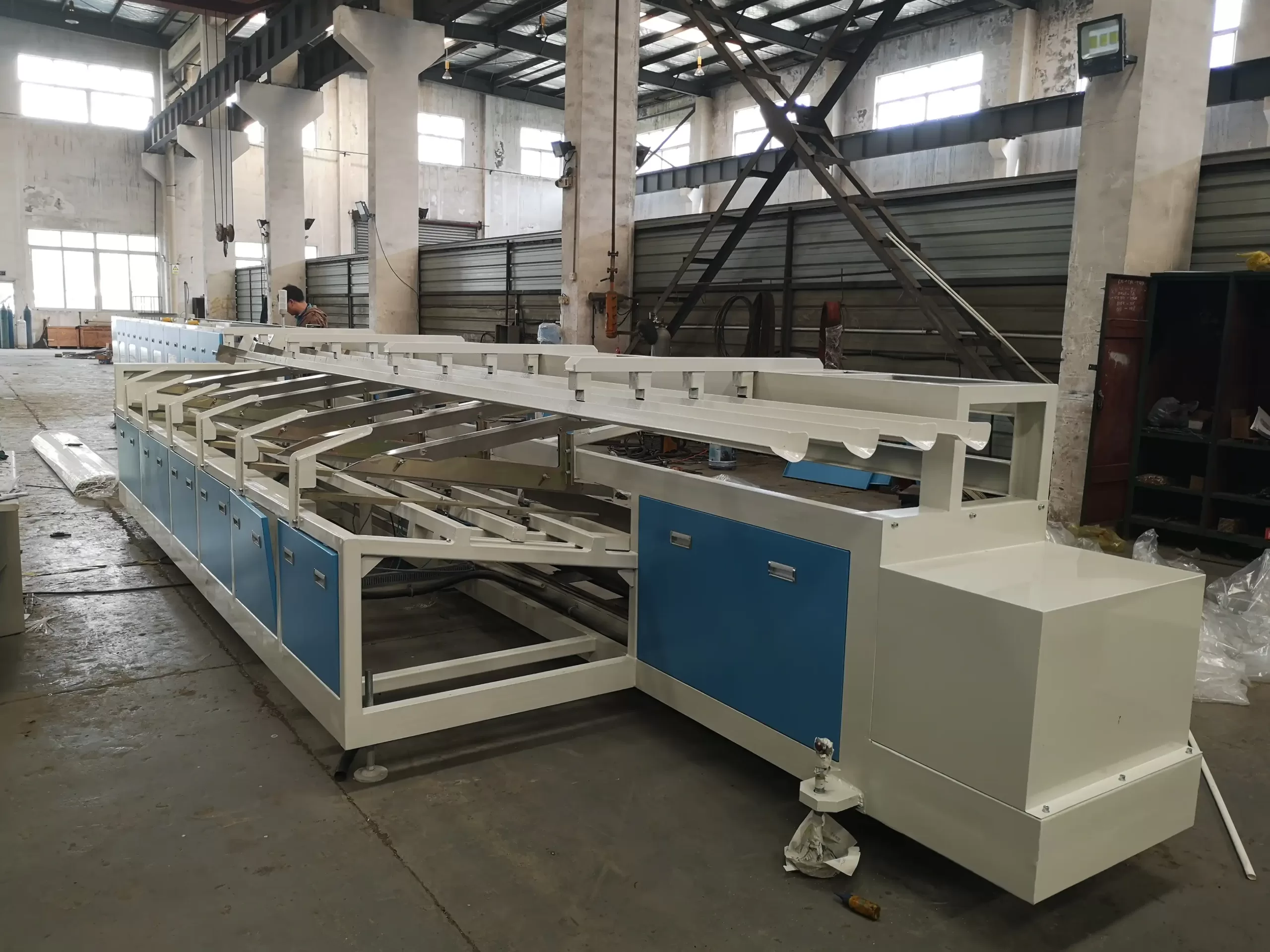
3. Representative Technical Specifications
While exact specifications vary by manufacturer and application, typical parameters include:
- Applicable Pipe Diameters: 16mm - 250mm (wider ranges possible with customization)
- Applicable Pipe Lengths: 2 meters - 6 meters (or longer)
- Bundle Configuration: Hexagonal, square, or rectangular shapes.
- Bundle Size (Max Cross-Section): e.g., up to 800mm x 800mm
- Strapping Material: PET or PP strap (width and thickness specified by application)
- Number of Straps: 2 - 6 straps per bundle (adjustable positions)
- Bagging Material: PE Film Roll (thickness and width specified by application)
- Sealing Method: Heat Seal / Impulse Seal
- Cycle Time/Throughput: Highly variable, often 1-3 bundles per minute depending on pipe size, bundle configuration, and number of straps.
- Control System: PLC with Touch Screen Interface
- Power Requirements: Typically 380V/50Hz/3Phase (or customized)
- Compressed Air: 6-8 bar (consumption varies)
(Note: These are examples; specific machine capabilities should be confirmed with the manufacturer based on exact requirements.)
4. Experience Sharing: Implementing Automated Pipe Packaging
Integrating an automated line yields several practical advantages observed in real-world applications:
- Enhanced Throughput: Significantly faster than manual methods, matching upstream production speeds.
- Consistent Package Quality: Uniform strapping tension and neat bagging improve load stability and appearance.
- Labor Optimization: Reduces manual handling, freeing up personnel for higher-value tasks and mitigating risks of repetitive strain injuries.
- Material Savings: Precise control over strap tension and bag dispensing can optimize consumable usage compared to manual application.
- Improved Safety: Minimizes direct operator interaction with moving pipes and strapping mechanisms.
- Space Efficiency: While requiring a footprint, integrates multiple operations, potentially saving overall floor space compared to separate manual stations.
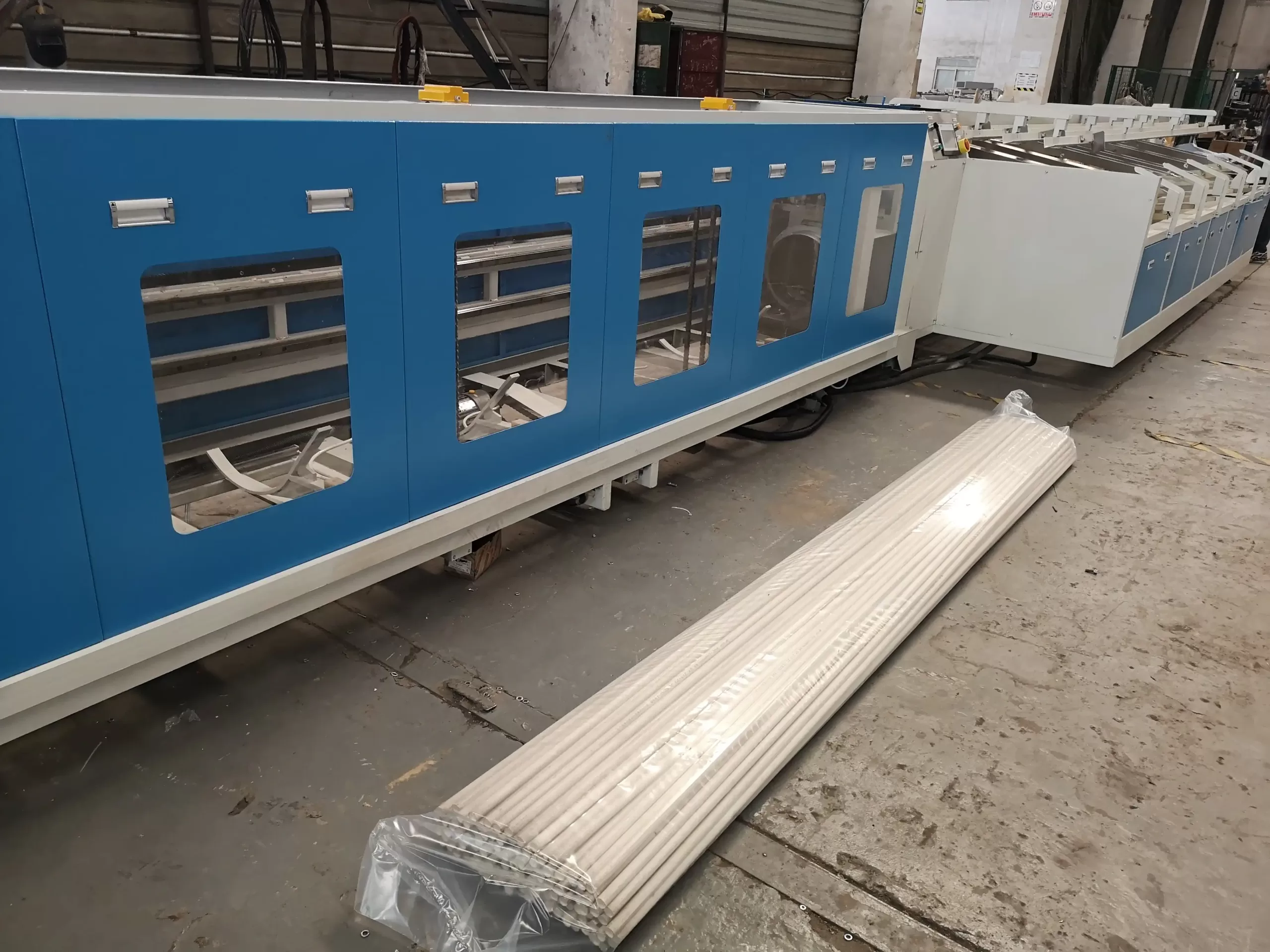
5. Considerations for Fabricators and Manufacturers
Before investing in such a system, consider:
- Pipe Range: Ensure the machine accommodates the full range of pipe diameters, lengths, and potentially wall thicknesses you produce.
- Bundle Sizes & Configurations: Define required bundle shapes and pipe counts.
- Throughput Needs: Match the line's cycle time to your production output.
- Factory Layout: Allocate sufficient space for the machine, including infeed/outfeed areas and maintenance access.
- Integration: How will the line connect with existing extrusion, socketing, or handling equipment?
- Material Handling: Plan for efficient loading of strapping and film rolls.
- Maintenance & Support: Availability of spare parts and technical support is crucial.
6. Conclusion
Automated PVC pipe bundling and bagging lines represent a significant step forward in streamlining packaging operations. By combining counting, strapping, and bagging into a cohesive system, these machines enhance efficiency, improve package consistency, reduce labor dependency, and contribute to a safer working environment. For manufacturers dealing with significant volumes of PVC pipes, investing in automation offers a robust solution to meet production demands and maintain competitiveness.
Explore further details on plastic pipe packing solutions

